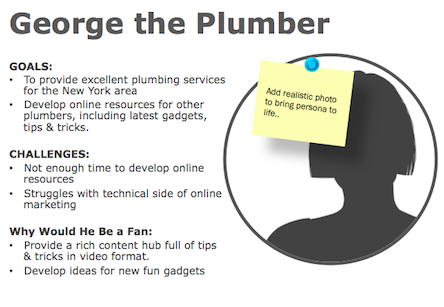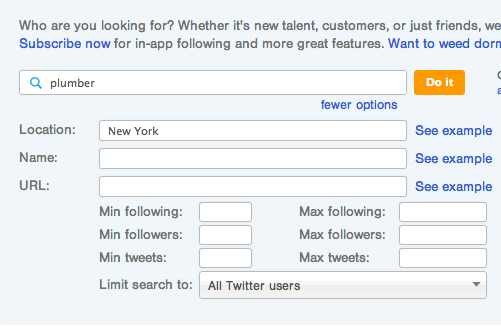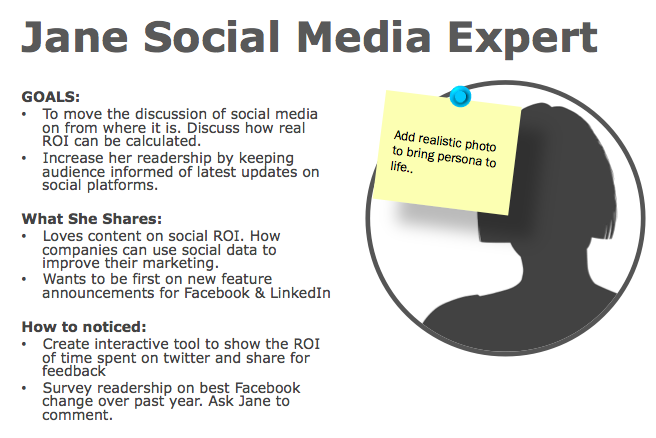Two Personas Every Marketer Should Care About, Even if They Never Buy
by Kieran Flanagan

April 30, 2013 at 12:30 PM
45
inShare
inShare
 At HubSpot we talk about personas a lot. That's because inbound marketing is really about creating persona-driven marketing that helps you engage with your dream customers in the channels they are most comfortable in. When discussing personas, we usually talk about buyer personas and how identifying them can help you create marketing people really love.
At HubSpot we talk about personas a lot. That's because inbound marketing is really about creating persona-driven marketing that helps you engage with your dream customers in the channels they are most comfortable in. When discussing personas, we usually talk about buyer personas and how identifying them can help you create marketing people really love.However, there are lots of other uses for personas, and two in particular come to mind that (for the purposes of this blog post, at least). Though they'll probably never become a customer, there are two personas to whom you should still always consider in your marketing. These people can help you generate more inbound links, social shares, and email forwards, and can help you gain clout and boost your thought leadership credibility. Here are the two otherpersonas all marketers should consider -- even if they'll never become your customer -- and how to think about them alongside your day-to-day marketing activities.
The Company Fan
Having fans that link to your content and share it on their social networks is an important part of any modern-day content strategy. In some markets, creating remarkable content for your buyer personas will naturally attract lots of links and social shares. For example, HubSpot creates lots of content for different types of marketers; many of these marketers also have the power to share that content with their networks or link to it from their blogs.
Now consider the situation of a website that is offering, say, plumbing services. It's a lot different, right? The people who buy their services probably won’t be the same people who will link to their site or share it on social media. Their buyer personas may not be as active online, have their own social media accounts, or a blog to link out from. Thus, they need to develop a persona for people they want to turn into fans.
Sample Company Fan Persona: George the Plumber
Let's call the first persona this company could target "George the Plumber." This persona is directed toward other plumbers who are using inbound marketing to generate awareness for their own company. These people are active online and have the resources to provide you with a link or share it with their network.

There are a lot’s of ways to develop this profile of your "Company Fan." You could interview other plumbers, conduct a group survey, do analysis of other plumbing websites to identify who links to them and, more importantly who they link out to. Another quick way to retrieve some information is through a tool called FollowerWonk. Here's what you do:
1) Visit FollowerWonk and search for your target persona. In this search we narrowed results to “New York,” but for personas that are not very active online, I would recommend not adding a location. For example, there are only 34 Twitter users in New York who have “plumber” in their bio. When you remove New York, there are over 4,000.

2) Copy the FollowerWonk search URL and paste it into TagCrowd. You will get back a list of other common words these people have in their Twitter bio. This could help you identify other interests that plumbers have, giving you things they may link to or share on Twitter.

There could be multiple “Company Fan” personas for any one business. For example, staying within the plumbing sector, here's a good example of a piece of content that is targeting a separate or sub-persona -- those who care about clean water. This piece of content has attracted over 343 unique links so far, and lots of social shares. Think of it as the long tail of persona targeting.
The purpose of content is to attract the right kind of visitors who will turn into happy and successful customers, so in most cases you want to create content for your buyer personas. But inbound marketers looking to widen and strengthen their online footprint should consider a separate persona for a "Company Fan" that will probably never purchase from you, but will help you spread your content and brand message. This focus will help you, over time, bring in more people that actually will become a future customer.
The Influencer
An influencer is another example of a persona that may not purchase a product from you, but can have a big impact on the success of your brand. They are the people in your market who can help get your content in front of a bigger audience with the click of a button, add social proof around your products, service, and content, and generally help grow your brand.
The first step is to identify some real-world influencers who you can base your persona on. To do this, I am going to use FollowerWonk and compare my followers with two other hubspotters,@DianaUrban & @Mallikarjunan:

There are 26 people who we all follow. These are people who are influencers to us. Clicking on that link will show me who they are:

You could then manually create a list for these and keep an eye on what type of content your influencers share, or if you're a HubSpot customer, you could automate the whole process using HubSpot's social media tool:

The next thing to do is segment your influencers into different categories and figure out how you can develop content they will actually care about. This is made easier when you have everything they are sharing in one handy list. One of the "Influencer" personas may look like this:

With these tweaks to your day-to-day marketing, you can now make influencer marketing part of the content mix you produce. Again, this may never get you direct sales from the influencers themselves, but will really help to get your brand name mentioned in the right circles and even get you indirect sales from that awareness.
The most important personas for your business are your buyer personas, but the same techniques can be used to create personas that will benefit the rest of your inbound marketing.